I remember when the enormity of the NYC Marathon really hit me. Some years ago, I was in a helicopter, flying eyeball to eyeball with the Verrazzano, looking north to the distant Manhattan skyline, and I noticed the cables supporting the bridge were moving. And not just, you know, wiggling. They were shaking, rattling, jumping, quivering. The sheer weight and motion of that tramping horde of runners, their legs moving up and down, piston-like, was shivering a suspension bridge that was designed for heavy objects to roll over it in relatively smooth horizontal fashion. The structure was unaccustomed to thousands of humans doing the equivalent of the Lindy Hop over the span.
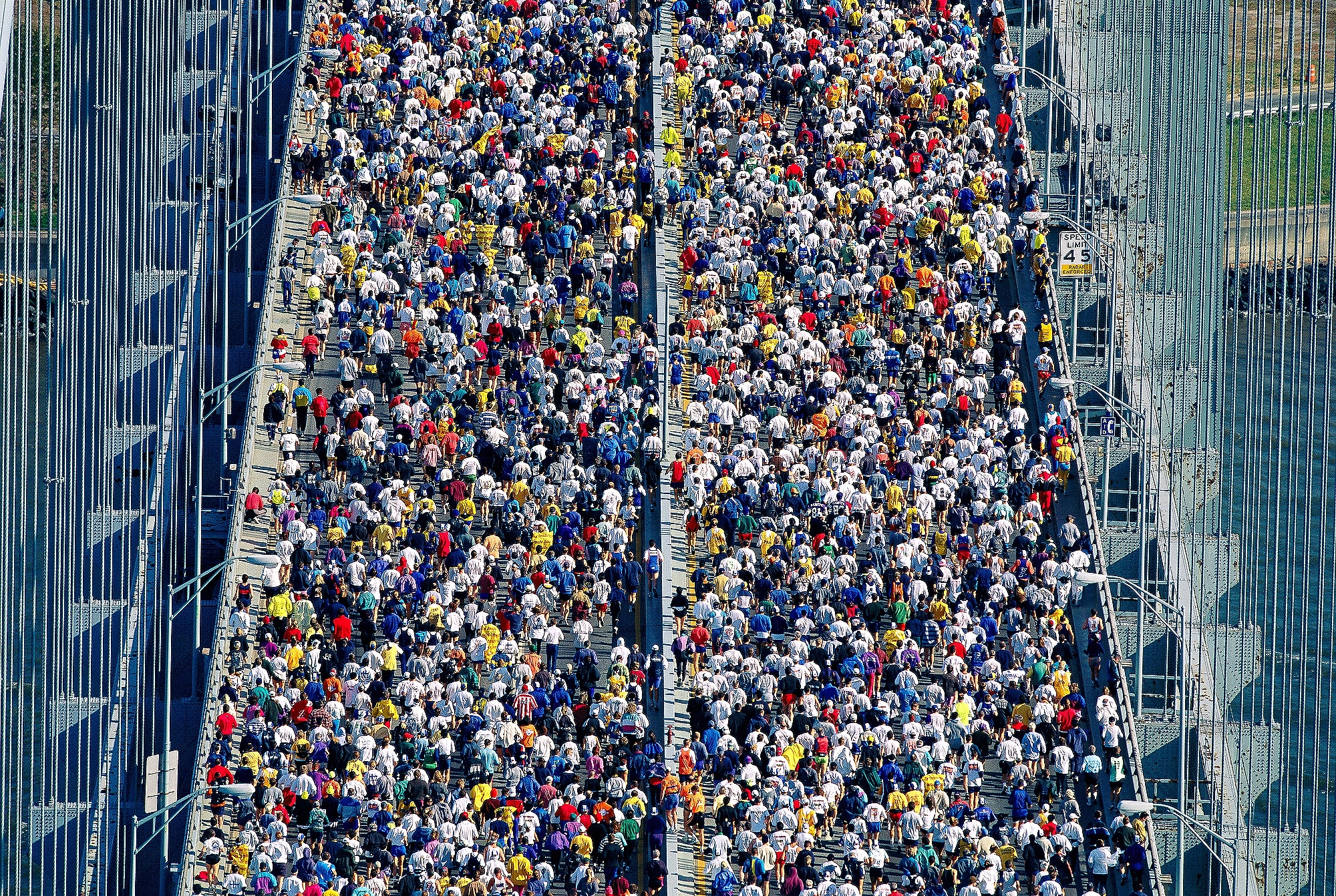
A race that began in 1970 with 127 competitors lapping around Central Park grew over time to snake its way through all five boroughs and involve over 50,000 runners of varying degrees of skill and endurance. It has become a quintessential marker in the New York calendar. It binds the city into a spirit of exuberance, if only for a day.
I covered it a bunch, through the late 70’s, into the 80’s and 90’s, on film, and thence into the 2000’s and the digital era. It is generally not an event where one could “go wrong.” The massive wave of runners coming at your lens, be it wide or long, has innate graphic impact, with shadows and patterns galore. If you blow a picture of 50,000 runners coming at you, relatively slowly, it’s time to investigate carpentry or macrame as a weekend endeavor. But as always with photography, you give a little and get a little. If you fly, you get magnificent views, but give away the sweat, blood and tears down on the tarmac. If you’re on the street, you look for the humanity and congenial nature of the volunteers and fans helping and urging on the runners. But forget about magnificent overviews. If you use street level as a platform, you should most likely bring a step stool, which is of course fun to carry all day long. If you go out onto the Verrazzano to get the initial wave of runners, you’re pretty much stuck there. That’s your coverage day. The top runners nowadays are so fast, it’s tough to get the start and the finish.
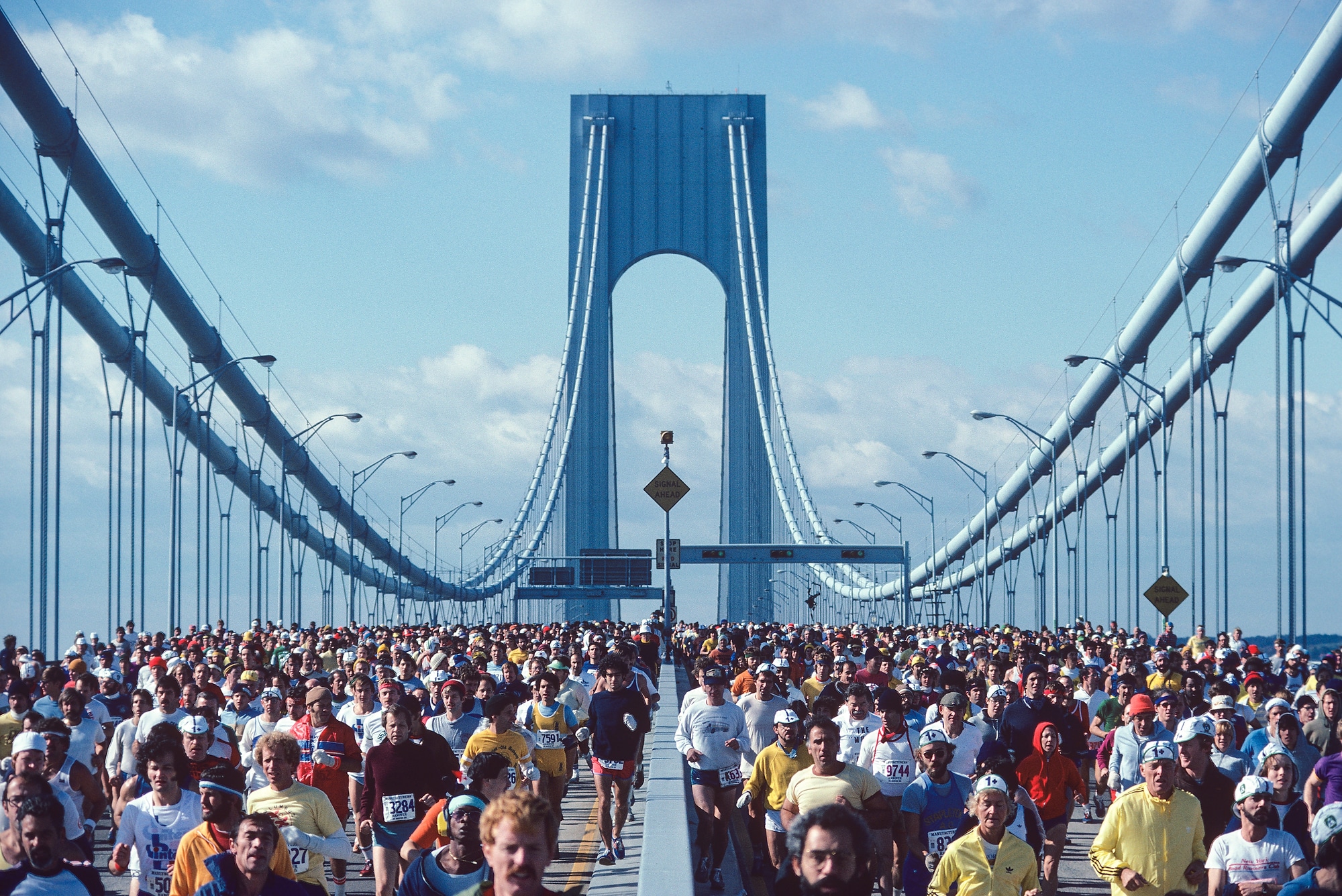
(Though, in 1978, for UPI, I went to the middle of the bridge, then walked off it and jumped a subway back to Manhattan and got to the finish line to make pictures of Bill Rogers logging one of his wins. The entire area around the finish was heavily fenced off, so I kicked down layers of fencing and pushed my way onto the photo bridge (all your photo competitors always welcome you warmly when they’ve been standing there for hours and camping out a position and you show up late, push in and shoot over their shoulder). I managed to shoot Rogers finishing with an F2 and a Nikkor 80-200 f4.5 push-pull zoom. I was willing to destroy the fence and bull through the crowd like a pulling offensive guard because I was terrified of coming back to the newsroom and facing off with Larry DeSantis without a finish picture. (Fear is a great motivation in the field.)
Sometimes the motivation is sheer cussedness. I got out to the finish area one year, very early, and learned from track officials that another photographer, Peter B. Kaplan, had arranged for a crane truck to put him up on one of the main cables. I demanded the same access for the UPI. Peter B. was hopping mad, but I got onto the cable. No safety belt, rounded surface, slick as snot from the early fog. The crane operator was cheery. “Next stop’s the river!” he said as he backed the crane off. Peter and I worked it out, as he insisted I stay behind him, so you can see him in this frame, standing on the cable. (The runner taking a leak off the bridge at the bottom of the pic is also fun. One hopes there wasn’t a cruise ship departing the harbor at that moment. Or, one could reason this is appropriate punishment for anyone foolish enough to take a cruise.) This chrome, in all the years of storage, developed some sort of measles, and is rife with yellowish spots. But then, it’s a 40-year old Ektachrome, so one could argue it’s weathered the storm better than I have.
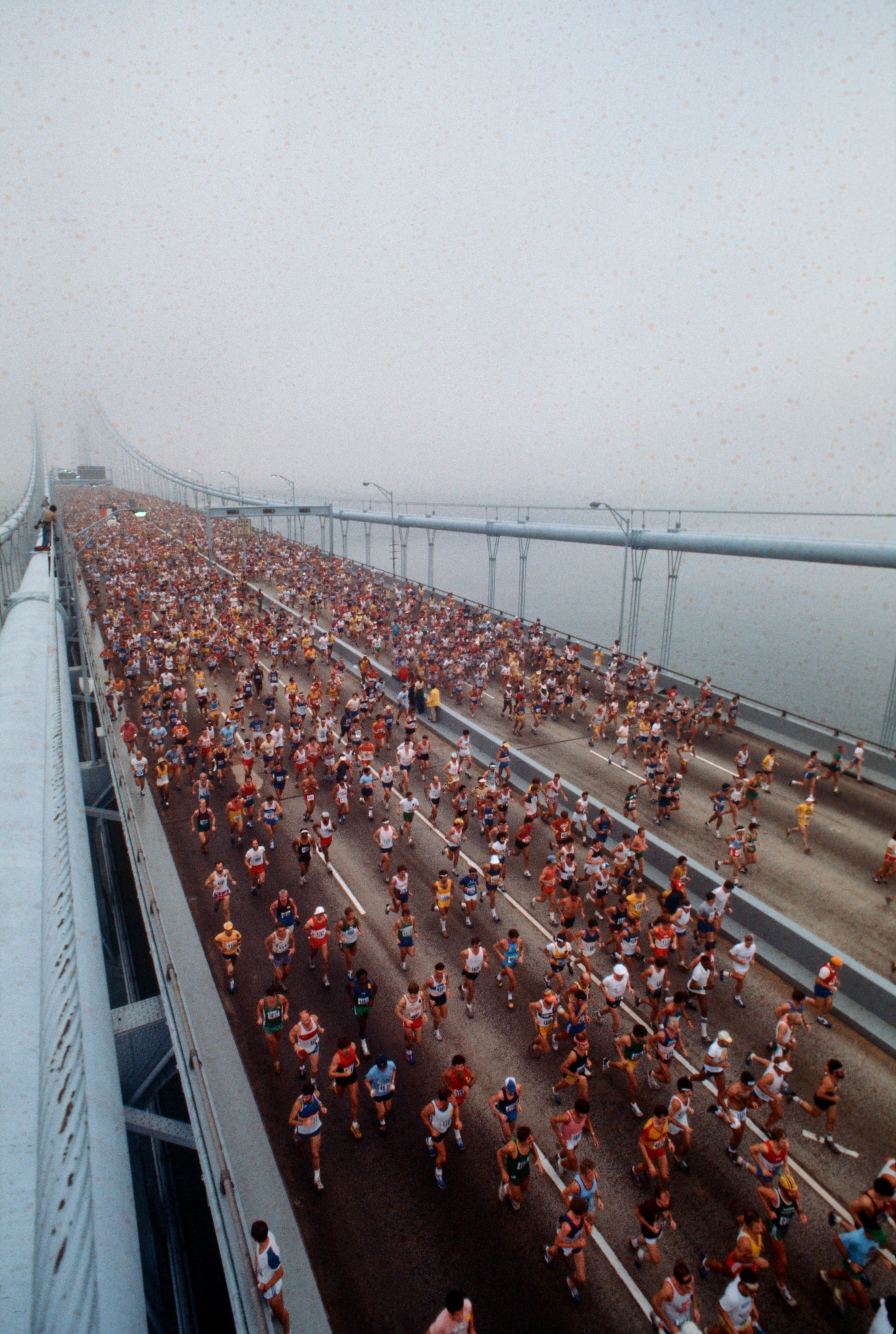
Long lens from the same spot.

Film from the air. The below was shot for Nat Geo, with a Fujica 617 Pano camera. You would only get four frames on this camera with a roll of 120. Reloading that thing in an open door chopper was interesting.

Onto digital. I did mention there are over 50,000 runners.
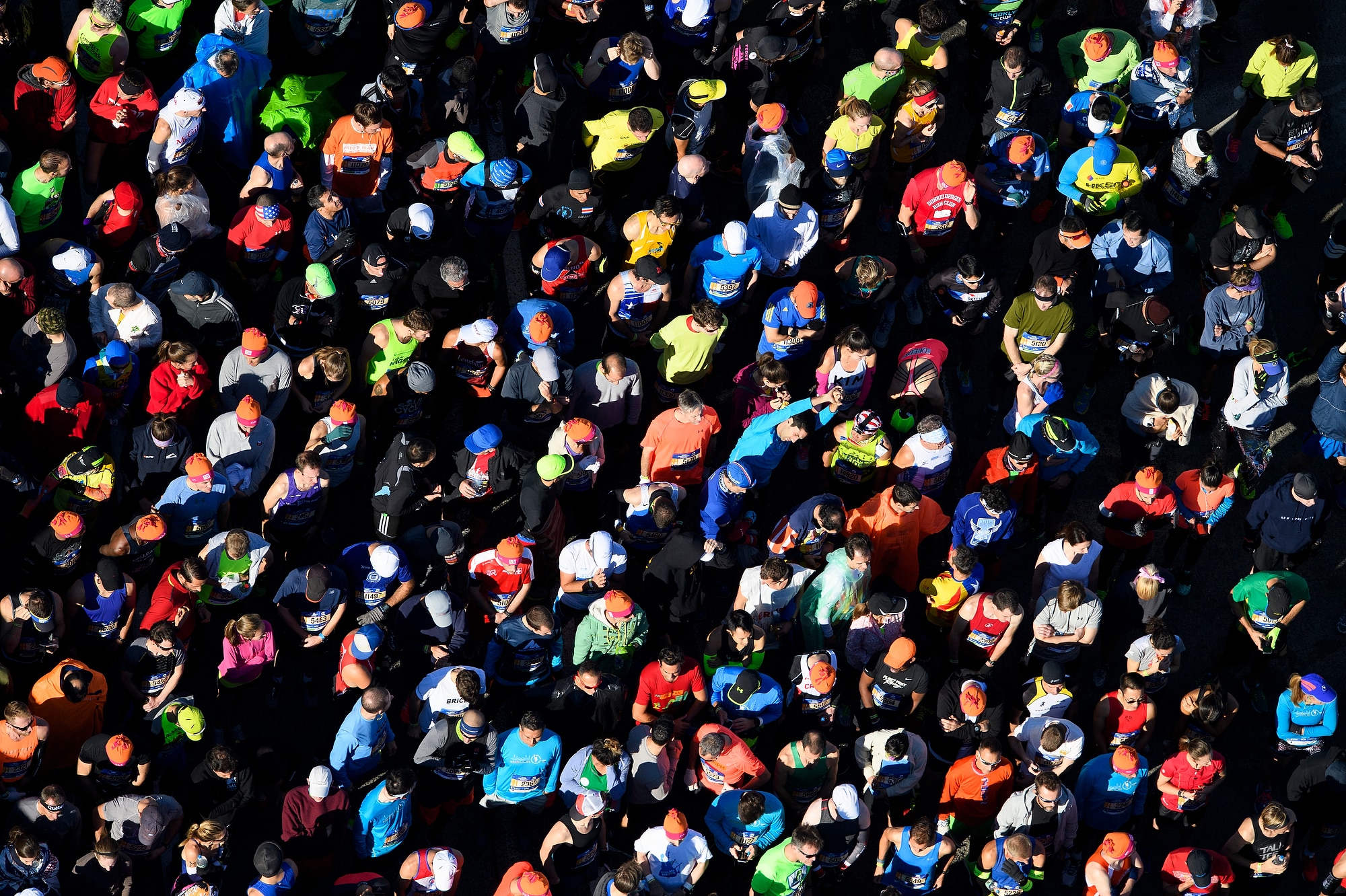
And life goes on in NYC on race day.

And including fall foliage is good information for the viewer.
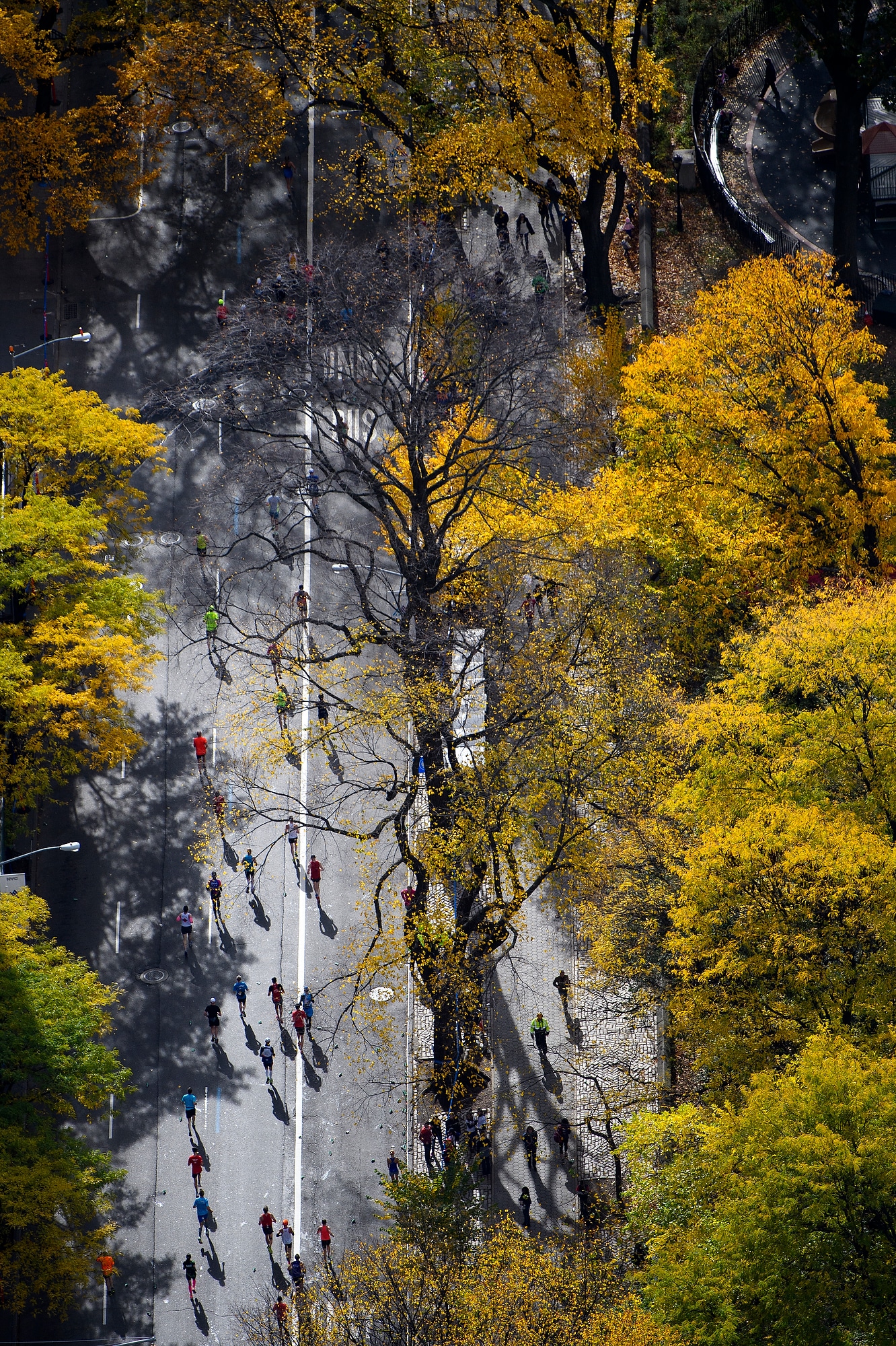
Always cool when the runners hit the canyons of Manhattan.
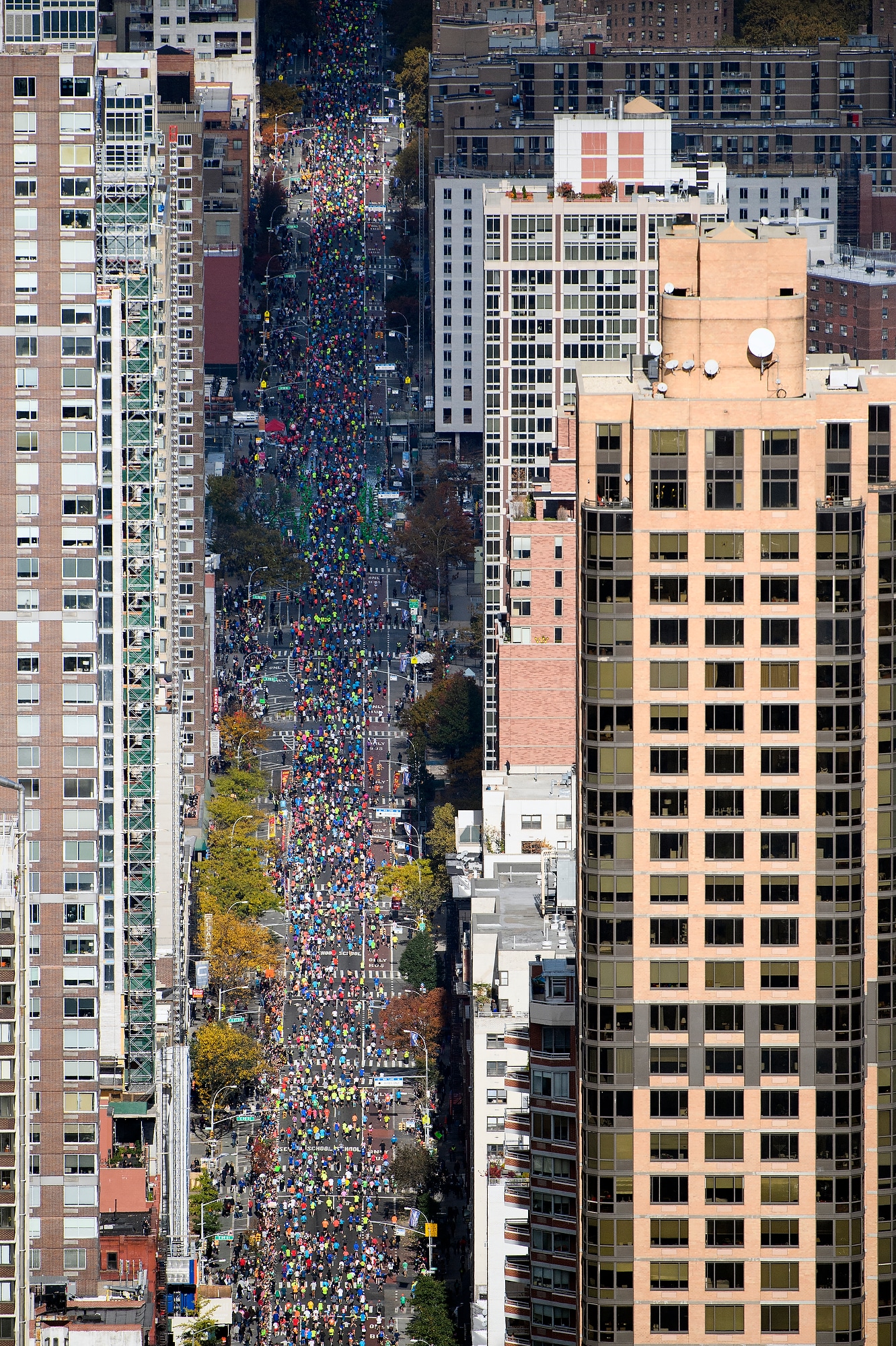
Hard light makes for hard, black shadows.
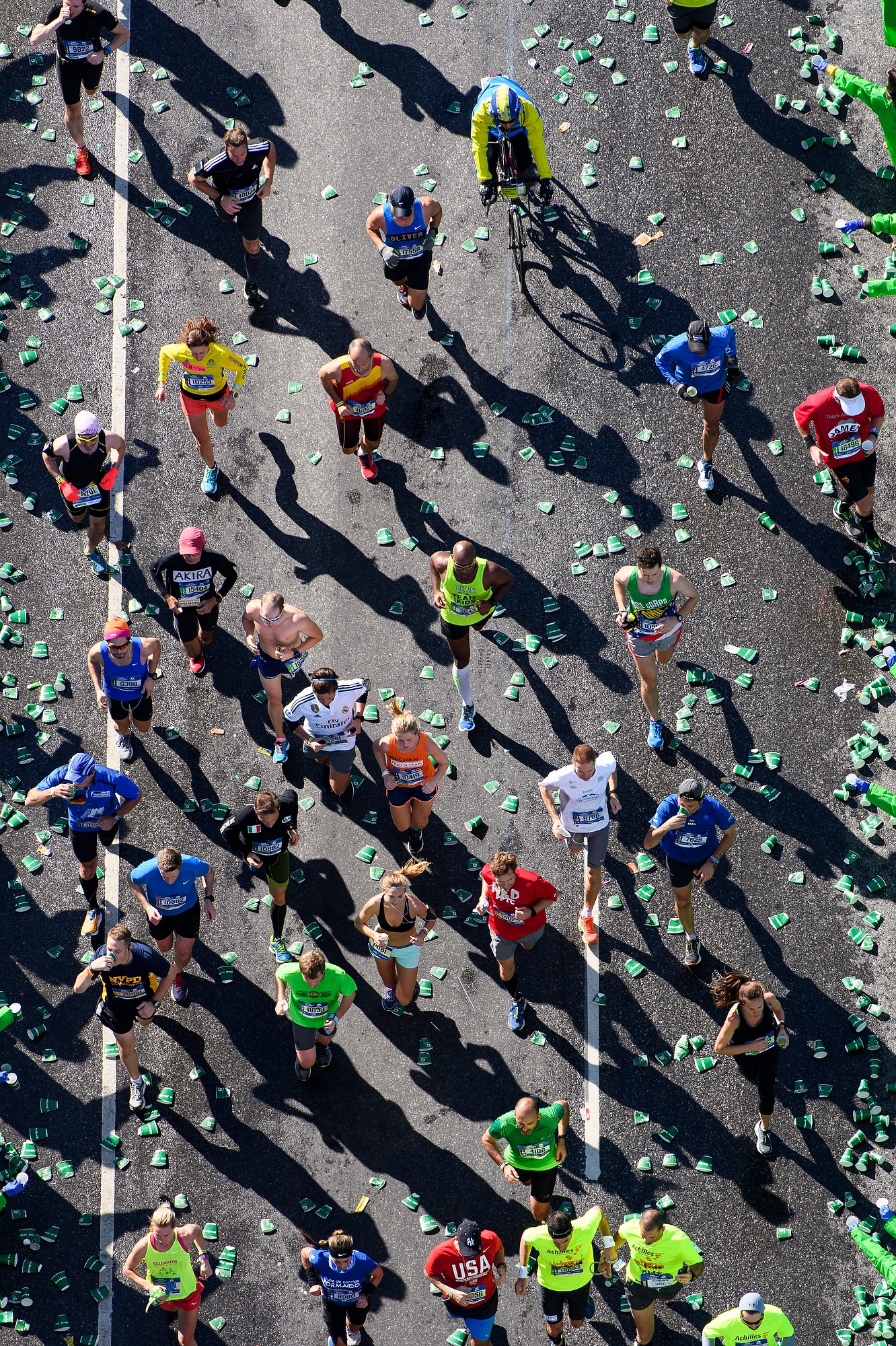
Shapes from the air.
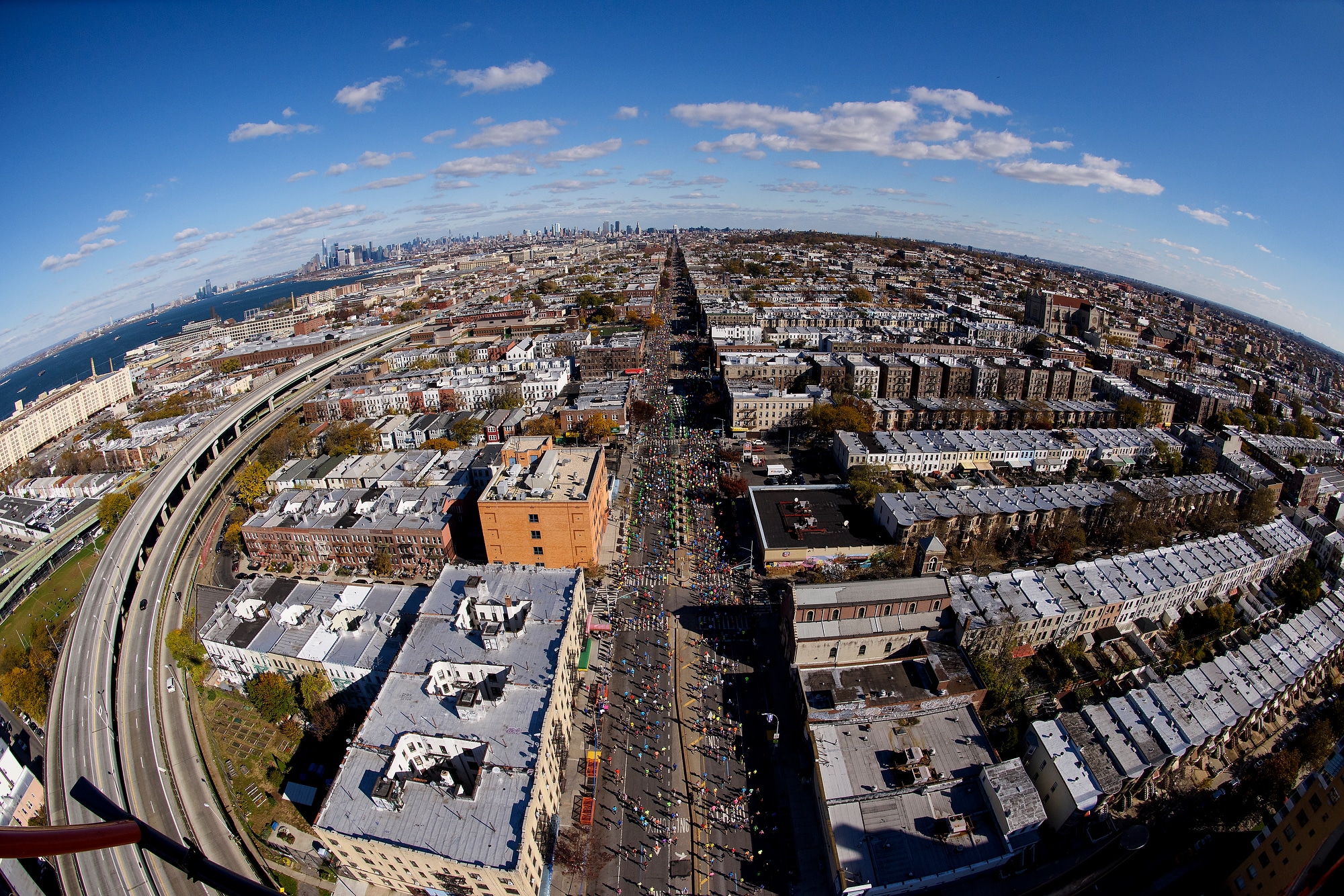
Early coverage, from the Verrazzano. I suspect they don’t let you do this anymore. Shot by my good friend Dennis McDonald, who had an amazing career as a lifelong newspaper photog. We were kids up there on that bridge.
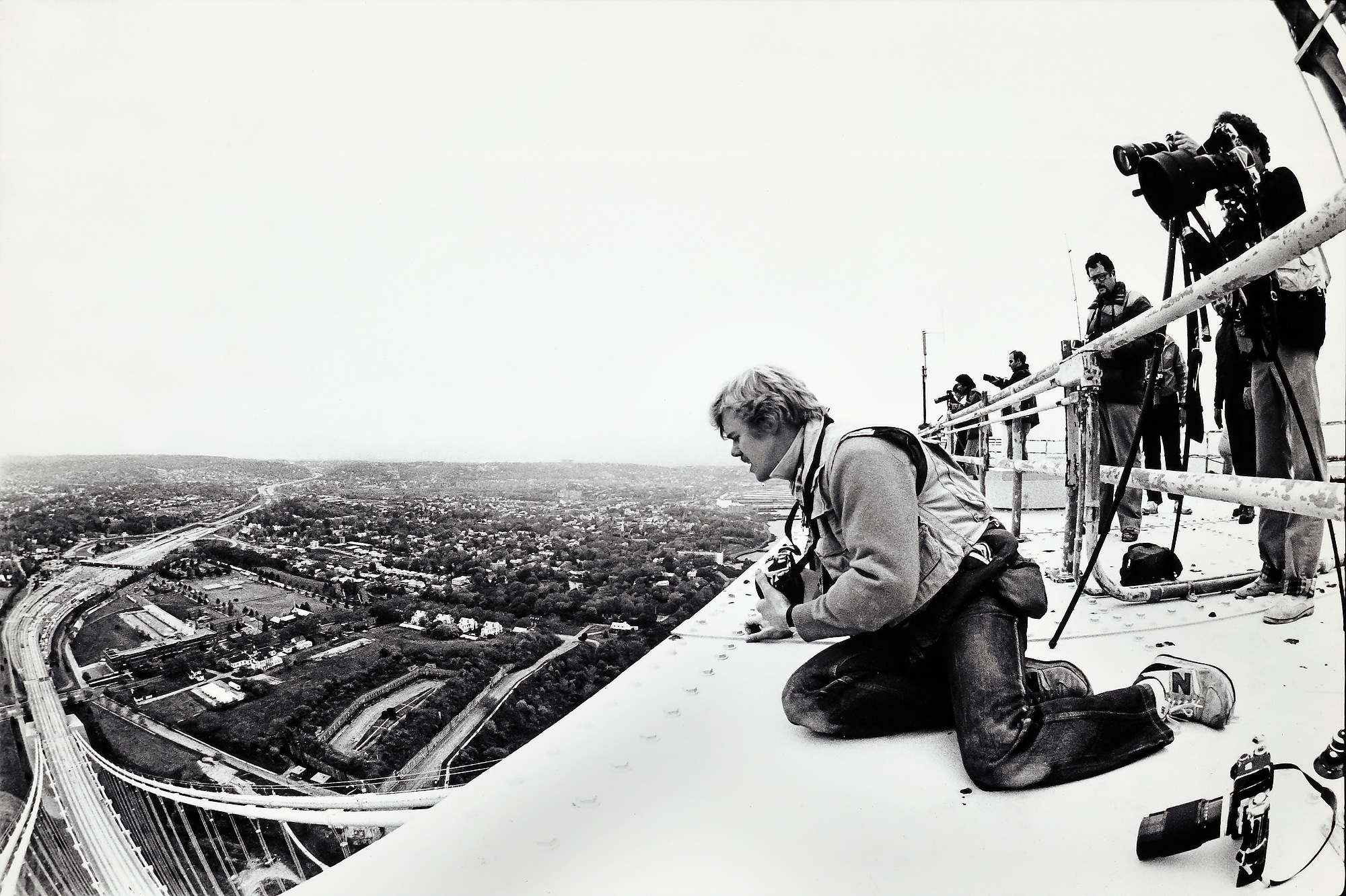
The photo above closes the book, The Real Deal: Field Notes from the Life of a Working Photographer. The accompanying text is below.
I’ve been writing this book for the last two years, and I’ve been thinking about it for the last five, and living it for the last forty.
The life of a photographer is largely about climbing over the safety rail and peering out, and over, and beyond. And we keep doing it, ill-advisedly, despite the fact that there is often nothing there to see, or what is seen is disappointing, irrelevant, drab, and hardly worth the effort, much less the risk to ourselves.
But we keep doing it. Over and over, with no assurances of success, safety, or remuneration. Because there may be a picture there. Unlikely, but possible. And that tantalizing possibility is the endless fuel that animates the photographic spirit, and makes you climb over the rail, even when logic says stay put. The Irish poet laureate Seamus Heaney, possessed of a deep eloquence and understanding of the human condition, may have unwittingly penned the best description of a photographic career. It is, in fact, carved on his gravestone in the north of Ireland.
“Walk on air against your better judgement.”
More tk….gotta keep running.
The post Running Through the Years appeared first on Joe McNally Photography.






